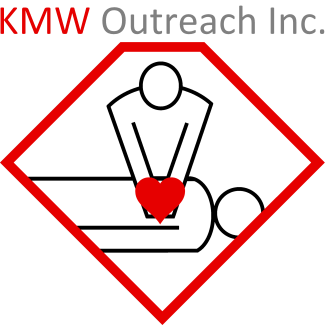Do You Know How To Save A Life?
Each year, an estimated 35,000 cardiac arrests occur in Canada.
One of the most essential lifesaving skills learned in first aid is Cardiopulmonary Resuscitation (CPR) and the use of an Automated External Defibrillator (AED).
These skills can be used in the instance of cardiac arrest when someone stops breathing, and their heart stops effectively pumping blood.
What is CPR? How Does It Work?
CPR is a combination of chest compressions and rescue breaths. The chest compressions act as the heart and the rescue breaths add more oxygen to the blood being carried to the brain.
Cardiopulmonary Resuscitation (CPR) keeps blood with oxygen moving to the person's brain while their heart and lungs are not functioning correctly. Without oxygen, a person's brain begins to die within 4-7 minutes.
How To Perform Life-saving CPR:
Traditional CPR
Traditional CPR consists of 30 chest compressions and two rescue breaths; repeated until help arrives.
To perform chest compressions, place your hands in the center of the person's chest. Keep your elbows locked and use the strength of your core and your body weight to push the person's chest down at least 2 inches.
Chest compressions should be performed at a pace of 100-120 beats per minute. There is the long-standing trick of singing the song "Staying Alive" by the Bee Gees to keep yourself on pace. Keep in mind that the maximum speed should be two compressions within every second.
To perform rescue breaths, place your barrier over the persons' airways and create a seal. Some barrier devices create their own seal over both airways. However, most protective barriers only seal their mouth, so you need to seal their nose by pinching it.
This provides oxygen to the brain through rescue breaths that add oxygen to the blood system. Chest compressions get the oxygenated blood to the person's brain to keep it alive and functional.
This form of CPR is recommended when a protective barrier is available for adults. It is also recommended for children and babies.
However, CPR alone will not re-establish a proper heart rhythm in a person in cardiac arrest. Continue reading below to learn how AEDs can effectively re-establish a steady heart rhythm.
Compression-only CPR is recommended for adults when there is no protective barrier available to perform safe rescue breaths. It is when only the chest compressions are performed.
When someone's heart has stopped, blood is no longer circulated through the body and therefore, very little oxygen in the blood is used. The person was breathing normally only seconds ago (if the cardiac arrest is witnessed). Therefore their blood contains enough oxygen to hold them over for several minutes.
However, it is crucial to deliver blood and oxygen to the brain by performing chest compressions continuously.
Compression-only CPR is not recommended for children and babies. Their smaller bodies do not hold the same amount of oxygen, so rescue breaths are highly recommended.
Because compression-only CPR relies on oxygen that is in the blood, it is also not recommended when lack of oxygen is present, such as in the case of a drowning person.
5 Reasons You Should Learn How To Do CPR:
1. Heart Disease is the Second Leading Cause of Death In Canada:
According to Statistics Canada, diabetes, high blood pressure and heart attacks cause heart diseases that kill 50,000 Canadians a year.
While heart disease is on the rise, CPR can help save lives. Every year, 35,000 Canadians suffer cardiac arrest. The Heart and Stroke Foundation states that only 1 in 10 people survive out-of-hospital cardiac arrests. However, when used promptly and adequately, CPR can double the chances of survival.
3. The Life You Save May Be That of a Loved One
Did you know that 4 out of 5 cardiac arrests occur at home? And 70% of heart attacks occur at home! Not only that, but many victims of sudden cardiac arrest appear healthy. They may not have had any known heart diseases or risk factors. Performing CPR promptly may save the life of someone you love.
4. Prevent Brain Death
Brain death occurs 4-7 minutes after the heart stops beating effectively. CPR keeps blood flowing and provides oxygen to the brain and other vital organs, giving the victim a better chance for a full recovery. If CPR is given within the first 2 minutes of cardiac arrest, the chances of survival will double.
5. Join the 49 percent
Evidence indicates that bystander CPR and AED use can significantly improve survival outcomes from cardiac arrest. However, less than half (49%) of Canadians are confident in their ability to perform CPR on someone who isn't breathing. 9 in 10 Canadians would feel more confident administering CPR if they attended a course. Become part of the solution!
Where To Take a CPR Course:
KMW Outreach Inc. is a first aid training centre. We offer different first aid courses that include CPR Training:
This is our comprehensive two-day course offering first aid and cardiopulmonary resuscitation (CPR) skills for those who need training due to work requirements or who want more knowledge to respond to emergencies at home. Course meets legislation requirements for provincial/territorial worker safety and insurance boards and includes the latest first aid and CPR guidelines.
This course provides comprehensive WSIB APPROVED First Aid & CPR techniques for those who want more knowledge to respond to emergencies in the home or workplace. Every employer in Ontario employing not more than five workers in any one shift at a place of employment shall ensure that the first aid station is at all times in the charge of a worker who is the holder of a valid Emergency First Aid Certificate.
This course is designed to provide various levels of CPR training based on participant's background, needs and interest. A presentation on how to use an Automated External Defibrillator (and certification) is also provided with the course.
For more information on our courses, please visit https://www.kmwoutreach.ca/collections/first-aid-cpr-courses or contact us!

